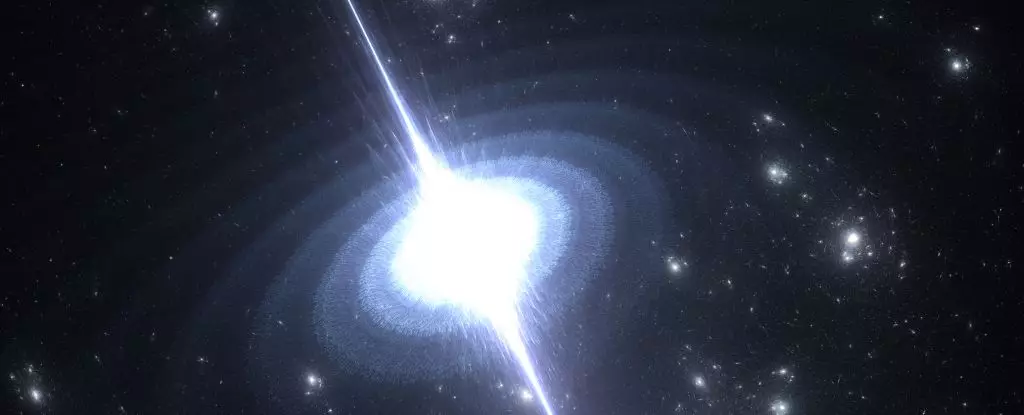The universe is an expansive expanse of mysteries, and prominently among these mysteries is the elusive nature of dark matter. While traditional matter makes up everything we can see, dark matter is theorized to account for a substantial portion of the universe’s mass yet is invisible to current detection methods. Among the theoretical candidates vying for the title of dark matter are hypothetical particles known as axions. These particles have intrigued physicists since their inception in the 1970s but remain undetected. However, new research suggests that neutron stars, particularly those that rotate at extreme speeds, may be capable of producing and trapping these elusive axions in quantities sufficient for detection.
Axions are fundamentally distinct from other known particles, including neutrinos, due to their anticipated weak interactions with regular matter. This characteristic renders axions challenging to observe, leading scientists on a prolonged and convoluted search. Crucially, if axions exist within a certain mass range, they are predicted to behave analogously to dark matter. Consequently, they would influence gravitational phenomena in ways that extend beyond observable normal matter. The theoretical underpinnings posit that axions can decay into pairs of photons when exposed to strong magnetic fields, potentially revealing their presence to astronomers.
Neutron stars are among the densest and most magnetic objects in the universe. Formed from the remnants of massive stars after a supernova explosion, these celestial bodies condense into an incredibly dense core where atomic structures are compressed to extreme degrees. The magnetic fields surrounding neutron stars can reach intensities trillions of times that of Earth, creating a unique environment for the potential formation and sequestering of axions.
Among neutron stars, pulsars stand out due to their rapid rotation. These astrophysical objects emit focused beams of radiation, akin to a cosmic lighthouse, pulsating at precise intervals as they spin. This spinning not only enhances the magnetic field but also creates a fascinating opportunity for research into axion production and trapping within their gravitational pull.
Recent scientific efforts have highlighted the potential of pulsars to harbor clouds of axions. Researchers suggest that if these axions indeed accumulate near neutron stars, they should create detectable signals over extended timescales—potentially lasting throughout the neutron star’s lifespan. This premise is intriguing, as it implies that axions could form a substantial layer surrounding the star, creating conditions ripe for detection.
Though extensive observations of pulsars have yet to reveal conclusive evidence of extra luminosity linked to axions, this absence of detection is not disheartening. Instead, it imposes stricter limits on the parameters defining the existence and properties of these particles, allowing scientists to refine their search for axions.
As researchers delve deeper into their studies, two potential signatures of axion presence have emerged: a continuous signal and a burst of light. The continuous signal would appear as a distinguishable frequency correlate to the mass of the axions—a parameter yet to be pinpointed. The absence of this line in spectral observations would inform scientists about the ranges of axion mass, refining theoretical models and guiding future detection efforts.
On the other hand, the burst of light would be an event marked by a neutron star ceasing its emission, potentially observable only trillions of years from now when such aging processes could occur. While this prospect tantalizes astrophysicists, the more immediate goal remains the identification of continuous signals, which may provide a conduit into the enigmatic world of dark matter.
As cosmic exploration continues, the potential for discovering axions via neutron stars remains a thrilling frontier in astrophysics. Although the search has not yielded conclusive evidence yet, the ongoing endeavors illuminate a pathway that could redefine our understanding of fundamental particles and dark matter. With improved observational techniques and a more profound theoretical framework, humanity may one day unlock the secrets that axions hold, leading not only to answers about dark matter but perhaps also to transformative insights into the very fabric of the universe.


Leave a Reply